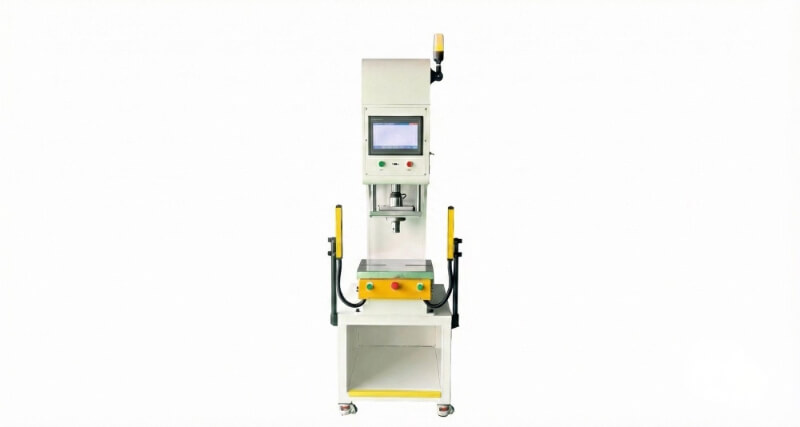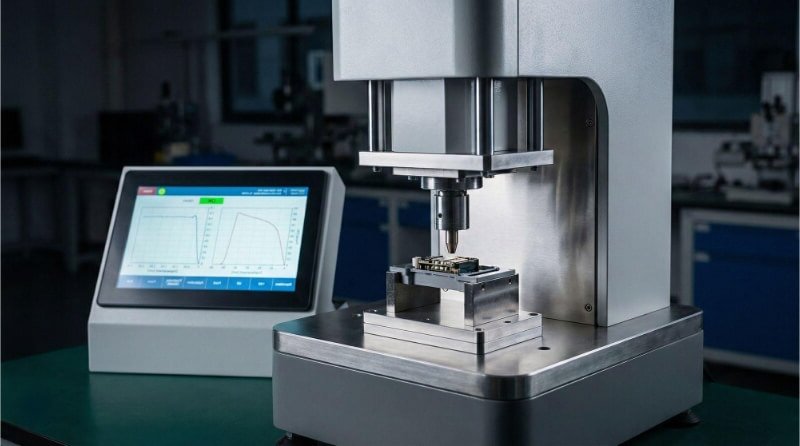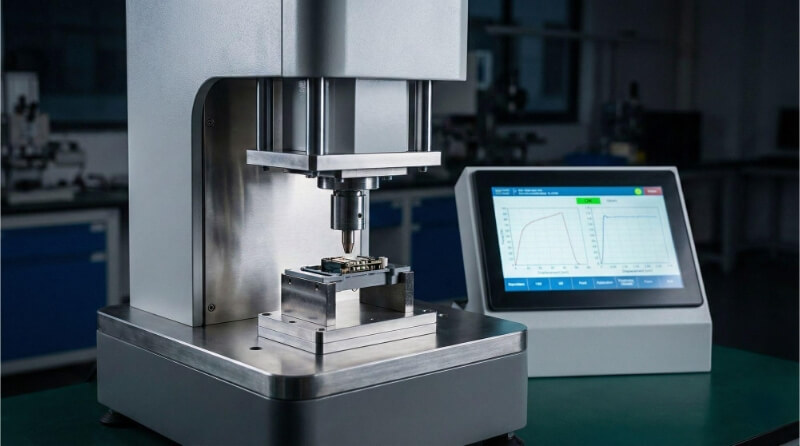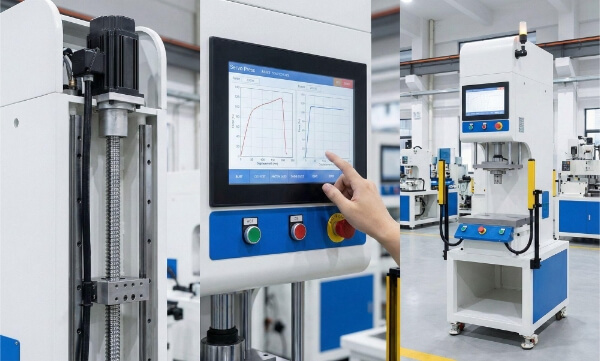Viele Branchen sind auf Materialien angewiesen, die sowohl Haltbarkeit als auch Leistung bieten. Wolfram wird oft wegen seiner einzigartigen Eigenschaften gewählt, aber seine hohe Dichte sticht am meisten hervor. Mit dieser Eigenschaft lassen sich schwierige Konstruktionsaufgaben in Technik, Fertigung und Elektronik lösen. Für Fachleute ist es wichtig zu verstehen, wie sich die Dichte von Wolfram auf Produkte und Prozesse auswirkt, um fundierte Entscheidungen treffen zu können.
Die Dichte von Wolfram prägt die Art und Weise, wie Menschen es in realen Projekten verwenden. Es lohnt sich zu erforschen, wie diese eine Eigenschaft einen solchen Unterschied macht.

Was ist Wolfram?
Wolfram ist ein hartes, graues Metall mit einem sehr hohen Schmelzpunkt. Es ist außerdem sehr dicht und fest. Es wird für Werkzeuge, Elektronik und Maschinen verwendet, die mit großer Hitze oder hohem Druck umgehen müssen.
Die Ordnungszahl von Wolfram ist 74. Sein Symbol ist W, das von dem Wort "Wolfram" stammt. Es hat 74 Protonen und Elektronen mit einer komplexen Struktur, die starke Bindungen ermöglicht.
Es befindet sich in Gruppe 6 und Periode 6 des Periodensystems. Es gehört zu den Übergangsmetallen. Diese Metalle sind bekannt für ihre Zähigkeit und ihre hervorragenden elektrischen und thermischen Eigenschaften.
Wolfram kommt in der Natur nicht in reiner Form vor. Es wird normalerweise aus Mineralien wie Wolframit und Scheelit gewonnen. Nach dem Abbau wird es zu einem Metallpulver raffiniert und dann in feste Formen gebracht.
Die dichte atomare Struktur von Wolfram ist ein Schlüsselfaktor für seine hohe Dichte und sein hohes Gewicht. Jedes Atom liegt dicht beieinander, was das Gewicht auf kleinem Raum erhöht. Dies ist der Grund für seine hohe Dichte.
Die Dichte verstehen
Die Dichte gibt an, wie viel Masse in einem bestimmten Raum untergebracht ist. Sie ist eine der grundlegendsten Methoden zur Beschreibung eines Materials, insbesondere von Metallen wie Wolfram.
Was ist Dichte und wie wird sie gemessen?
Die Dichte ist die Masse eines Objekts geteilt durch sein Volumen. Die Formel lautet:
Dichte = Masse ÷ Volumen
Um die Dichte zu messen, wiegt man zunächst das Material, um seine Masse zu ermitteln. Dann misst man seine Größe, um das Volumen zu ermitteln. Das Volumen eines Würfels beispielsweise wird durch Multiplikation seiner Länge, Breite und Höhe berechnet.
Sobald Sie beide Zahlen haben, teilen Sie die Masse durch das Volumen. Das Ergebnis ist die Dichte des Materials.
Anhand dieser Eigenschaft können Sie vergleichen, wie "schwer" sich Materialien im Verhältnis zu ihrer Größe anfühlen. Ein kleiner Block aus Wolfram fühlt sich schwerer an als ein größerer Block aus Aluminium.
Einheiten der Dichte im metrischen und imperialen System
Im metrischen System wird die Dichte gewöhnlich in Gramm pro Kubikzentimeter (g/cm³) oder Kilogramm pro Kubikmeter (kg/m³) angegeben.
Zum Beispiel:
- Wasser = 1 g/cm³
Im imperialen System kann die Dichte in Pfund pro Kubikzoll (lb/in³) oder Pfund pro Kubikfuß (lb/ft³) angegeben werden.
Die Bedeutung der Dichte bei der Materialauswahl
Die Dichte wirkt sich darauf aus, wie sich ein Material in einem Produkt verhält. Ein dichtes Material wie Wolfram erhöht das Gewicht, was sich positiv auf das Gleichgewicht, die Stabilität und die Vibrationskontrolle auswirkt.
Bei der Konstruktion hilft die Dichte den Ingenieuren bei der Entscheidung, welche Materialien für Festigkeit und Haltbarkeit oder zur Gewichtsreduzierung verwendet werden sollen. Sie wirkt sich auch auf die Transportkosten und die einfache Handhabung aus.
Bei bestimmten Anwendungen, z. B. in der Luft- und Raumfahrt oder bei Sportgeräten, können Metalle mit geringer Dichte Gewicht sparen. Für andere Anwendungen, wie Gegengewichte oder Panzerungen, ist eine hohe Dichte vorzuziehen.
Die Dichte von Wolfram
Die Dichte von Wolfram ist eines seiner wichtigsten Merkmale. Diese hohe Dichte verschafft ihm zahlreiche Vorteile bei anspruchsvollen Anwendungen.
Standard-Dichte bei Raumtemperatur
Bei Raumtemperatur (ca. 20 °C oder 68 °F) hat Wolfram eine Standarddichte von 19,25 Gramm pro Kubikzentimeter (g/cm³).
Damit hat Wolfram eine fast doppelt so hohe Dichte wie Blei und eine fast viermal so hohe Dichte wie Aluminium. Es bleibt bei den meisten Arbeitstemperaturen stabil, d. h. seine Dichte ändert sich in typischen Umgebungen nicht wesentlich.
Wolfram Dichte in g/cm³, kg/m³, und lb/in³
Hier sehen Sie, wie die Dichte von Wolfram in Standardeinheiten aussieht:
- 19,25 g/cm³ (Gramm pro Kubikzentimeter)
- 19.250 kg/m³ (Kilogramm pro Kubikmeter)
- 0,694 lb/in³ (Pfund pro Kubikzoll)
Diese Werte werden auf der Grundlage des vom Benutzer bevorzugten Maßsystems verwendet. Ingenieure in den USA verwenden möglicherweise lb/in³, während die meisten anderen g/cm³ oder kg/m³ verwenden.
Warum Wolfram als superdichtes Material gilt?
Wolfram gehört zu den schwersten natürlichen Elementen. Seine Atome sind riesig und dicht gepackt. Diese dichte Atomstruktur ist der Grund für sein hohes Gewicht.
Zum Vergleich:
- Blei: 11,34 g/cm³
- Stahl: 7,85 g/cm³
- Wolfram: 19,25 g/cm³
Aus diesem Grund ist Wolfram ideal für Teile, die klein und dennoch schwer sein müssen. Es wird in Gegengewichten, Strahlenschutzschilden, militärischer Hardware und hochdichten Werkzeugen verwendet.

Faktoren, die die Wolfram-Dichte beeinflussen
Die Dichte von Wolfram ist hoch, kann aber je nach den verschiedenen Bedingungen leicht variieren. Diese Faktoren beeinflussen, wie sich das Material in der Praxis verhält.
Temperatur und Phasenwechsel
Wenn die Temperatur steigt, dehnen sich die meisten Materialien aus. Wolfram tut dies auch, aber nur sehr geringfügig.
Bei hohen Temperaturen bewegen sich die Atome in Wolfram auseinander, wodurch sich das Volumen vergrößert. Da die Masse konstant bleibt, nimmt die Dichte leicht ab. Diese Änderung ist in der Regel geringfügig und wirkt sich bei den meisten Anwendungen nicht wesentlich aus.
Wenn Wolfram extrem hohe Temperaturen erreicht, wie z. B. beim Schmelzen oder Verdampfen, können Phasenveränderungen eine deutlichere Verschiebung der Dichte verursachen. Wolfram schmilzt jedoch bei 3.422 °C, so dass dies im täglichen Gebrauch nur selten vorkommt.
Legieren mit anderen Elementen
Reines Wolfram hat die höchste Dichte. Wenn es mit anderen Elementen gemischt wird, um Legierungen zu bilden, sinkt seine Dichte normalerweise.
Zum Beispiel:
- Wolfram-Kupfer Legierungen werden für die Herstellung von Wärmesenken und elektrische Bauteile. Sie haben eine geringere Dichte als reines Wolfram.
- Wolframkarbid, das häufig in Schneidwerkzeugen verwendet wird, hat eine hohe Dichte, die aber immer noch etwas geringer ist als die von reinem Wolfram.
Die Legierung verändert die atomare Struktur und die Atomabstände, was sich direkt auf die Dichte auswirkt. Ingenieure müssen dies bei der Auswahl von Materialien berücksichtigen.
Herstellungsverfahren und Reinheitsgrade
Auch die Art der Verarbeitung von Wolfram kann sich auf seine endgültige Dichte auswirken.
Wolfram wird häufig durch Pulvermetallurgie hergestellt. Bei diesem Verfahren wird Wolframpulver gepresst und erhitzt, um feste Formen zu bilden. Wenn das Pulver bei diesem Verfahren nicht vollständig verdichtet wird, können winzige Lufteinschlüsse zurückbleiben, die die tatsächliche Dichte verringern.
Auch die Reinheit spielt eine Rolle. Reines Wolfram hat eine Dichte nahe dem Idealwert von 19,25 g/cm³. Wenn das Material Sauerstoff, Kohlenstoff oder andere Verunreinigungen enthält, kann die Dichte niedriger sein.
Die hochwertige Verarbeitung gewährleistet eine engere Kornstruktur und weniger Hohlräume, so dass die Dichte nahe am theoretischen Wert bleibt.
Industrielle Anwendungen, die die Dichte von Wolfram nutzen
Die extreme Dichte von Wolfram macht es unersetzlich in Branchen, in denen es auf kompakte Masse oder Strahlungsbeständigkeit ankommt. Schauen wir uns die wichtigsten Anwendungen an.
Luft- und Raumfahrt
In Flugzeugen und Satelliten muss das Gewicht auf engem Raum ausgeglichen werden. Wolfram wird häufig als Ballast in Flugzeugsteuerflächen, Rotorblättern und Satellitenkomponenten verwendet.
Es wird auch zur Strahlenabschirmung im Weltraum verwendet. Wolfram absorbiert schädliche Strahlen, ohne dass große, sperrige Strukturen erforderlich sind. Dies hilft, die Größe der Nutzlast zu verringern und gleichzeitig empfindliche Elektronik und Instrumente zu schützen.
Medizinisch
Wolfram spielt eine Schlüsselrolle in der Strahlentherapie zur Krebsbehandlung. Es wird verwendet, um Strahlen zu bündeln oder zu blockieren, um gesundes Gewebe zu schützen.
In CT-Scannern und Röntgengeräten schützen Wolframabschirmungen die Benutzer vor Streustrahlung. Seine hohe Dichte trägt dazu bei, schädliche Strahlen effektiver als andere Metalle zu blockieren.
Militär
Wolfram ist ideal für panzerbrechende Munition. Seine Dichte verleiht Kugeln und Geschossen das Gewicht und die Härte, um Metallpanzerungen zu durchdringen.
Es wird auch in Raketenlenksystemen und als Gegengewicht für Hubschrauberrotoren verwendet. Diese Teile müssen schwer, aber kompakt sein. Wolfram erfüllt diese Anforderungen besser als Blei oder Stahl.
Wolfram-Legierungen und ihre Dichten
Wolframlegierungen werden verwendet, wenn reines Wolfram zu spröde oder schwer zu bearbeiten ist. Diese Legierungen behalten einen Großteil der Dichte von Wolfram bei und verbessern gleichzeitig Festigkeit, Bearbeitbarkeit und Leistung.
Wolframkarbid und seine Anwendungen
Wolframkarbid ist eine Verbindung aus Wolfram und Kohlenstoff. Es handelt sich nicht um eine Metalllegierung, sondern um ein Keramik-Metall-Gemisch (Cermet). Seine Dichte beträgt etwa 15,6 g/cm³ und ist damit etwas geringer als die von reinem Wolfram.
Es ist robust und verschleißfest. Dies macht es ideal für:
- Schneidwerkzeuge
- Bohrer
- Metall-Formen
- Industrielle Düsen
Wolframkarbid wird häufig im Bergbau, bei der Bearbeitung und Metallverarbeitung. Es bleibt auch unter hohem Druck und Hitze formstabil und ist daher für anspruchsvolle Aufgaben geeignet.
Schwere Wolfram-Legierungen
Dabei handelt es sich um echte Metalllegierungen, die durch die Kombination von Wolfram mit geringen Mengen von Nickel, Eisen oder Kupfer hergestellt werden.
- W-Ni-Fe Legierungen sind fest, dehnbar und leicht zu bearbeiten. Die Dichte reicht von 17,0 bis 18,5 g/cm³.
- W-Ni-Cu Legierungen sind nichtmagnetisch und etwas weniger intensiv. Die Dichte ist ähnlich, etwa 17,0 bis 18,3 g/cm³.
Diese Legierungen werden in der Luft- und Raumfahrt, im Verteidigungsbereich und in der Medizin eingesetzt. Ihre Kombination aus Gewicht und Zähigkeit ermöglicht eine bessere Leistung in anspruchsvollen Umgebungen.
Unterschiede in der Dichte im Vergleich zu reinem Wolfram
Reines Wolfram hat mit 19,25 g/cm³ die höchste Dichte. Legierungen sind etwas leichter, da sie weniger dichte Metalle enthalten.
Zum Beispiel:
- Reines Wolfram: 19,25 g/cm³
- Wolframkarbid: 15,6 g/cm³
- W-Ni-Fe: 17-18,5 g/cm³
- W-Ni-Cu: 17-18,3 g/cm³
Die Wahl hängt von den Anforderungen ab. Wenn die höchste Dichte im Vordergrund steht, ist reines Wolfram die bessere Wahl. Wenn Zerspanbarkeit und Festigkeit im Vordergrund stehen, sind Legierungen oft die bessere Wahl.

Testen und Überprüfen der Wolfram-Dichte
Um sicherzustellen, dass Wolfram den Leistungsanforderungen entspricht, muss seine Dichte geprüft werden. Mit diesen Prüfungen wird die Qualität, Reinheit und Konsistenz des Materials vor seiner Verwendung überprüft.
Labor-Testmethoden
Das Archimedische Prinzip ist eine Standardmethode zur Messung der Dichte. Dabei wird die Wolframprobe zunächst in Luft und dann in Wasser gewogen. Aus der Differenz lässt sich das Volumen berechnen. Die Dichte ist dann die Masse geteilt durch das Volumen.
Diese Methode ist einfach und effektiv für massive Teile mit regelmäßigen Formen.
Röntgenverfahren wie die Röntgenfluoreszenz (XRF) helfen bei der Überprüfung der Materialzusammensetzung. Diese Tests messen nicht direkt die Dichte, können aber den Reinheitsgrad bestätigen. Eine Probe mit geringerem Wolframgehalt hat natürlich eine geringere Dichte.
Werkzeuge für die Qualitätskontrolle
Die Produktionsteams verwenden Präzisionswaagen, Messschieber und Mikrometer, um Masse und Volumen zu messen. So lässt sich überprüfen, ob die Dichte innerhalb des zulässigen Bereichs liegt.
Einige fortschrittliche Einrichtungen nutzen CT-Scans oder Ultraschall, um innere Hohlräume oder Defekte zu finden, die die tatsächliche Dichte verringern können. Diese Instrumente sind hilfreich für hochpräzise Teile, die in der Luft- und Raumfahrt oder in medizinischen Geräten verwendet werden.
Auch Härteprüfgeräte werden eingesetzt. Sie stehen zwar nicht in direktem Zusammenhang mit der Dichte, helfen aber dabei, ungeeignete Legierungsmischungen oder Verarbeitungsprobleme zu erkennen.
Erkennen von minderwertigem oder minderreinem Wolfram
Wolfram mit niedrigem Reinheitsgrad sieht zwar normal aus, fühlt sich aber für seine Größe nicht so schwer an. Der Vergleich von Gewicht und Volumen zeigt schnell, ob die Dichte zu niedrig ist.
Zu den roten Fahnen gehören:
- Material, das sich leicht anfühlt
- Unebene oder poröse Oberfläche
- Schlechte Bearbeitungsergebnisse
- Farbunterschiede zu Standard-Wolfram
Die Lieferanten sollten Materialzertifikate vorlegen, in denen Dichte, Reinheit und Prüfverfahren aufgeführt sind. Ohne diese Zertifikate besteht ein höheres Risiko, dass das Material nicht den Spezifikationen entspricht.
Schlussfolgerung
Wolfram hat eine sehr hohe Dichte von 19,25 g/cm³ und ist damit eines der schwersten in der Industrie verwendeten Metalle. Diese einzige Eigenschaft verleiht ihm Festigkeit, Stabilität und Widerstandsfähigkeit gegen Verschleiß und Hitze. Ob in der Luft- und Raumfahrt, in der Medizintechnik oder bei der Herstellung von Werkzeugen, das Gewicht spielt eine entscheidende Rolle bei der Bestimmung der Leistung.
Sie benötigen Wolframteile nach Maß? Wir bieten hochpräzise Wolframbearbeitungs- und -herstellungsdienste für Branchen, in denen Leistung gefragt ist. Kontaktieren Sie uns noch heute, um ein schnelles Angebot zu erhalten!
FAQs
Warum ist Wolfram so dicht?
Die Atome von Wolfram sind sehr schwer und dicht gepackt. Jedes Atom hat eine hohe Ordnungszahl (74) und eine große Masse. Da die Atome dicht beieinander liegen, kann mehr Masse auf engem Raum untergebracht werden. Dies führt zu einer hohen Dichte.
Wirkt sich die Dichte auf die Kosten von Wolfram aus?
Ja, in gewisser Weise. Eine höhere Dichte bedeutet mehr Gewicht pro Stück. Dadurch erhöhen sich die Rohstoff- und Transportkosten. Außerdem sind dichte Metalle schwieriger zu bearbeiten, was die Produktionskosten erhöhen kann. Aber der Preis hängt auch von der Reinheit, der Form und den Lieferbedingungen ab.
Ist Wolfram das dichteste Metall?
Wolfram ist eines der dichtesten Metalle, aber es ist nicht das absolut dichteste.
Osmium und Iridium sind etwas dichter:
- Osmium: ~22,59 g/cm³
- Iridium: ~22,56 g/cm³
- Wolfram: 19,25 g/cm³
Wolfram ist besser verfügbar, leichter zu verarbeiten und viel billiger. Deshalb wird es in der Industrie häufiger verwendet, auch wenn es nicht das dichteste Material ist.
Welchen Einfluss hat die Dichte von Wolfram auf seine Leistung in Werkzeugen und Geräten?
Die Dichte von Wolfram verbessert das Gleichgewicht, reduziert Vibrationen und erhöht die Masse, wo sie benötigt wird. In Werkzeugen hilft es beim Schneiden durch harte Materialien. In Geräten verbessert es die Stabilität und Verschleißfestigkeit. Es lässt sich gut unter Druck verarbeiten und behält seine Form auch unter rauen Bedingungen.
Hey, ich bin Kevin Lee

In den letzten 10 Jahren bin ich in verschiedene Formen der Blechbearbeitung eingetaucht und teile hier coole Erkenntnisse aus meinen Erfahrungen in verschiedenen Werkstätten.
Kontakt aufnehmen

Kevin Lee
Ich verfüge über mehr als zehn Jahre Berufserfahrung in der Blechverarbeitung und bin auf Laserschneiden, Biegen, Schweißen und Oberflächenbehandlungstechniken spezialisiert. Als Technischer Direktor bei Shengen bin ich bestrebt, komplexe Fertigungsherausforderungen zu lösen und Innovation und Qualität in jedem Projekt voranzutreiben.




